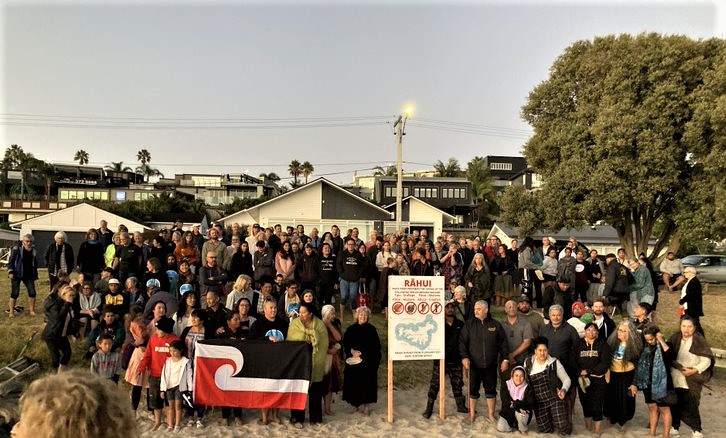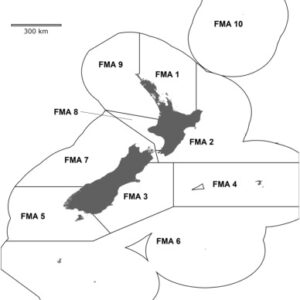A rāhui is an indigenous, Māori principle used to regulate human activity for the future well-being of the people and natural resources such as fisheries.
‘Rāhui’ translates ‘to prohibit, or a prohibition’. It is used in the form of restriction/ prohibition of a resource, area, or activity. In fisheries it is used to ban harvesting of a particular species and can also apply to ban harvesting from a specific area.

A rāhui for protecting natural resources:
A rāhui with the purpose of conserving, protecting, or sustaining a natural resource is applied with intent to restore the mauri (life essence) of the resource.
These rāhui were traditionally placed on all ecosystem types – Ocean, swamps, lakes or rivers and resources such as seafood, birds, plants, berries, fish, cultivated crops, fern root, flax, clays, and also the use of paths and rivers for travelling.
A uniting theme of these rāhui is to able to make sure there is a sustainable amount of resource so future generations can use them at the same or better rate than is currently used.
A distressed or imbalanced environmental state allows rangatira (leaders) to consider impacts on future well-being of people and the natural environment, and exercise their right as kaitiaki to apply measures such as rāhui, to allow time for the environment to regain balance.
For example, rāhui of this sort are often used in regards to seafood harvesting, and in these cases can be applied to prohibiting harvest of a particular species, or in a particular space, or how and when (seasonal) you can harvest.
Examples:
Ngāti Pāoa rāhui on Waiheke Island
Te Whanau a Rangiwhakaahu rāhui on Te Wai O Te Taniwha (Mermaid Pools)
Te Kawerau ā Maki rāhui on Waitākere
A rāhui following loss of life:
A rāhui following the loss of a life/ lives is to allow time to pass for tapu associated with the death(s) to dissipate from a physical area, cleansed by the natural elements. In this sense, it is a sign of respect by tangata whenua (people of the land) for the dead, and in an area and its resources a rāhui will be placed for a period of time.
The taonga (natural resources) protected by these types of rāhui are the resources in the rāhui area and also, in a spiritual sense, the regular users of the area. Rāhui of this kind are most commonly used nowadays in drowning/ sea related deaths, with a rāhui on entering the area and on shellfish collection and fishing for a time.
Rāhui in New Zealand governance:
The definition and uses of a rāhui is constantly being rewritten as they become more institutionalised and politicised. However, the most common uses for them nowadays still remain the same as they have throughout history, and they are following the loss of life or to replenish resources.
In New Zealand legislation, there is a known disconnect between the definition of rāhui traditionally, and what appears legislatively. ‘Rāhui’ only appears a few times and usually refers to a means which focuses on restoring productivity of land, or allowing the mauri (life force) of a resource to recover. The other time the term ‘rahui’ is used is to describe areas of Māori-owned land managed by the Department of Conservation as conservation reserves that are restricted for restoration or conservation purposes. These are known as ‘(Ngā) Whenua Rāhui’.
An unchanging facet of rāhui is they are always decided under the mandate of hapū, and instituted through rangatira or people who are given rights to be rangatira. So a government institution or political party cannot instigate a rāhui.
References:
What, really, is a rāhui – and can political parties enact them?
Why aren’t people listening? Māori scientists on why rāhui are important


